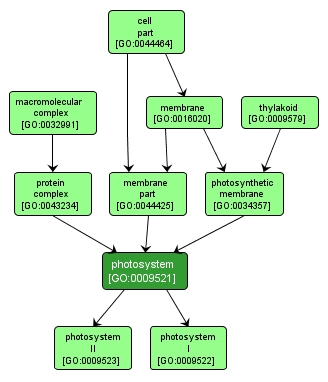GO TERM SUMMARY
|
| Name: |
photosystem |
| Acc: |
GO:0009521 |
| Aspect: |
Cellular Component |
| Desc: |
A complex located in a photosynthetic membrane that consists of a photoreaction center associated with accessory pigments and electron carriers. Examples of this component are found in Arabidopsis thaliana and in photosynthetic bacterial and archaeal species. |
Synonyms:
- GO:0030090
- reaction centre
- reaction center
|
|

|
INTERACTIVE GO GRAPH
|














